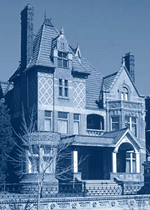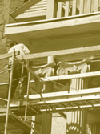| A CHECKLIST FOR CHANGE | |||||
|
GROWING INWARD REBUILDING THE CENTER CITY |
|
     
|
|
|||||||||||||||
Donovan Rypkema, in making the case for the economic viability of urban housing, cited his 1 Percent to 3 Percent Crazy Person Rule: In any community, from 1 percent to 3 percent of the population is crazy enough to want to live downtown. In Columbus, that translates into a market of about 20,000 people, far more than the 3,000 to 4,000 who live downtown now.
Stanley Lowe put conservation of existing neighborhoods in pragmatic terms: "We use historic preservation to express neighborhood success symbols, neighborhood resources and neighborhood history as a tool to educate our youth. We invite the whole community, including churches, to work with us as we use historic preservation as one of many strategies for developing a sense of self-worth and as a vehicle to attack neighborhood apathy." Columbus must evaluate current constraints on housing rehabilitation and development in existing neighborhoods and create incentives, streamlined approval processes - do whatever it takes - to re-engage the private sector in building the city. |
||||||||||||||||
| Introduction | Conclusion
| Speakers
| Sponsors Vision | Downtown | Policy | Transportation | Housing | Education Create Well Designed Infill Housing | Take Advantage of Recent Innovations |


